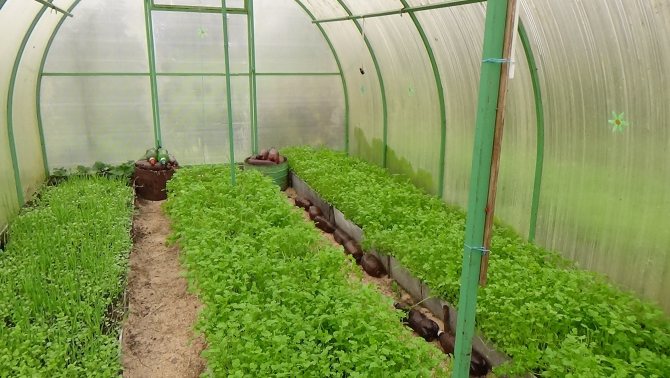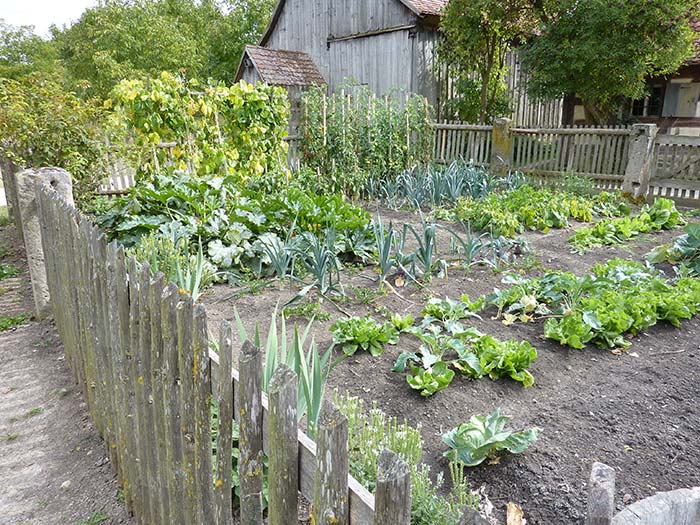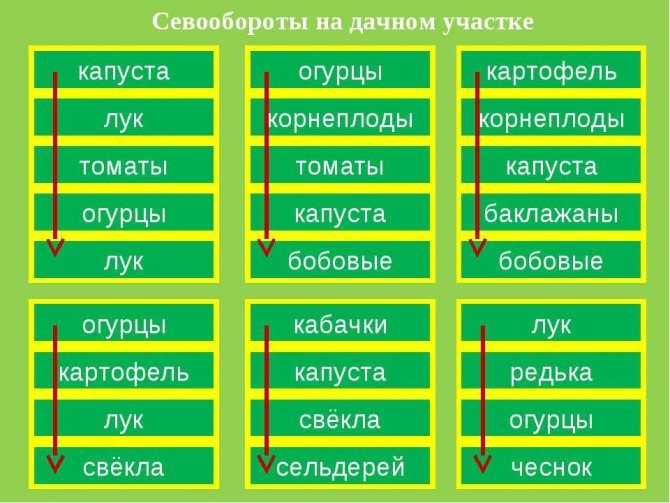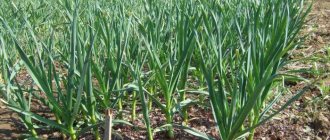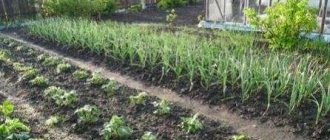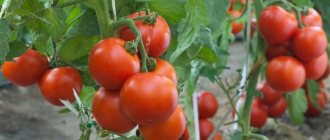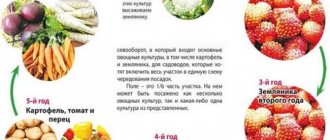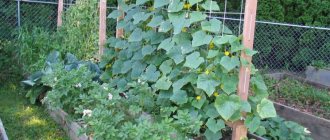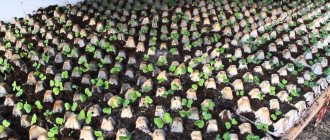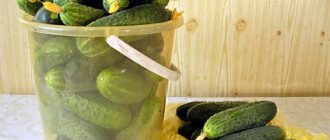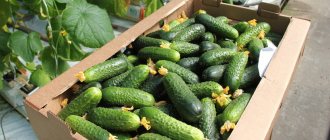In science, much attention is paid to allelopathy (the word means mutual suffering). The development of some organisms is suppressed and inhibited by others, due to the release of chemical compounds (colins, antibiotics, phytoncides, etc.)
To prevent this from happening, crop rotation is used to reduce the effect on plants and soil of fungi and microorganisms that appear during growth.
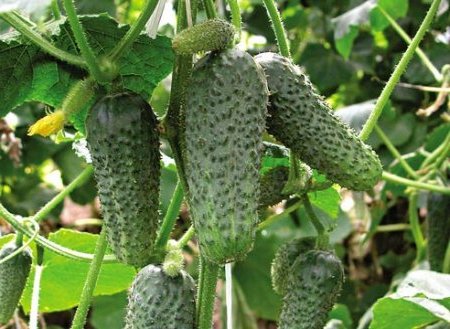
What to plant after cucumbers next year?
The decision about how to restore the soil after planting cucumbers is taken in advance, preference is given to crops that can be planted on the site in the fall. They will begin to sprout in the spring or have time to ripen before the cold weather.
Siderata are an excellent choice, their characteristics allow you to restore the quality of the soil quickly.
Even with rather little experience in the management of home gardens, gardeners and gardeners have heard that any crop cannot be grown in the same place. At least 2 years in a row can be planted. It's all about the soil - it gets very tired and depleted. In addition, pathogenic bacteria inherent in this type of plant accumulate in the soil.
As the most common crop, cucumber is planted in large quantities. Quite often, old beds are allocated for plantations. Gardeners are very upset when the yield of a promising variety suddenly drops sharply. And it is unaware to many that the point is in crop rotation.
Cucumbers have a superficial root system, therefore they deplete the topmost soil layer. According to the rules of crop rotation, root crops and crops with more powerful roots can be planted in their place.
In the open field
In the open field, it is best to plant root crops such as radish, turnip, beets, carrots, potatoes. Tomatoes, celery, parsley, onions, and garlic will also yield a good harvest.
Planting legumes after a pimpled vegetable, you can achieve an increase in soil fertility. Beans, beans, peas will saturate the soil with nutrients and prepare it for planting: peppers, potatoes, tomatoes, zucchini, lettuce, onions and corn.
In the greenhouse
In the greenhouse, the soil is depleted even more than in open beds. Cucumbers take almost all nitrogen from the soil, and instead release phenolic compounds. Therefore, vegetables with roots extending deep into the soil are suitable for planting after cucumbers. These are such cultures as:
- parsley;
- celery;
- parsnip;
- early potatoes;
- eggplant;
- tomatoes;
- pepper.
You can further improve the condition of the soil by sowing white mustard seeds.
According to the norms of crop rotation, cucumbers are returned to their original place 3-4 years after cultivation. This rule applies to both greenhouses and open ground. Some crops deplete the soil, while others give it generously nutrients. Because cucumbers need a nitrogen-rich substrate, they are planted after crops that leave this chemical in the soil.
In the open field
The ideal precursors for outdoor cucumbers are beans, beans and peas. They generously saturate the earth with nitrogen. Moreover, the stems after growing legumes are not thrown away. They are crushed with a shovel and dug up together with the ground. During the winter, plant residues will be peeled off, and you get an excellent nutritious soil.
Onions and garlic can also be considered as precursors for cucumbers. After them, the bed is suitable for almost any vegetable. Due to their bactericidal properties, these crops cleanse the soil well from harmful microflora.
In the greenhouse
Cucumbers can be planted after cabbage. This rule applies to all types of cruciferous vegetables. Before cucumbers, you can grow kohlrabi, red and white cabbage. If early varieties of cabbage were used, then cucumbers can be planted after it in the current season.
Growing crucifers helps to loosen the soil in the garden.
Suitable precursors for cucumbers are nightshades. These crops tend to disinfect the soil. Therefore, feel free to plant cucumbers after tomatoes and peppers, if they did not hurt during cultivation.
Mulch for cucumbers
Cucumbers can grow in "hot beds" for 3-4 years without changing their place. For this, a trench is dug with a depth of 70 cm. Branches, shavings, rough waste are poured into it. Then the removed soil layer is returned. The bed is knocked out from all sides with a curb with a height of 15 to 40 cm. The curb can be wooden, as well as brick, where holes are necessarily provided for the drain of excess moisture.
From above, the earth is densely covered with mature compost (depending on the height of the curb) with a layer of 15 cm or more. It is better to plant cucumber seedlings directly in peat cups so as not to disturb the root system. Cucumber plantings are compacted by sowing dill and legumes. Here, cowpeas, beans, peas, bush and curly beans will be good. We will dwell on the benefits of compacted landings a little lower.
What to plant in the same bed with cucumbers and zucchini
Discussions about the places where the salting culture is grown never cease. If you listen to the arguments of the disputants, then everyone is right. However, according to the rules of agricultural technology, perennial planting of one crop in a permanent place is prohibited.
Cucumber is no exception, but there are still times when there is simply no other place. There is a way out of the predicament: fertilizers and green manures come to the rescue.
Cucumbers extract potassium and nitrogen from the soil, leaving behind characteristic pests and accumulations of diseases. Each subsequent planting depletes the land more and more. Starvation, disease, pests are not the best companions for large harvests. Therefore, one should not be surprised that all the color and ovaries from the plant simply fall off.
Of course, systematic fertilization is able to temporarily support the plants, but this will not last forever.
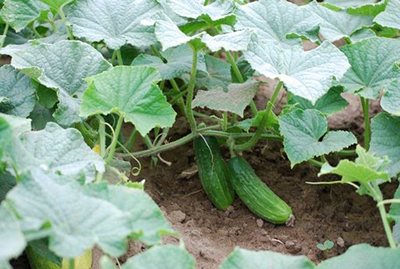

Sometimes gardeners replace the topsoil in the greenhouse. This is a rather laborious process, after which it is imperative to decontaminate both the soil and the greenhouse itself.
The cheapest way out of the situation when you have to plant the same beds with cucumbers again is to sow siderates. They both restore the soil and purify it, neutralizing the harmful substances left by the pumpkin plants.
Sowing of siderates is carried out at the end of summer, and in October they are mowed. Next, the cut is dug up together with the roots. The most successful green manure mixture is oats and vetch.
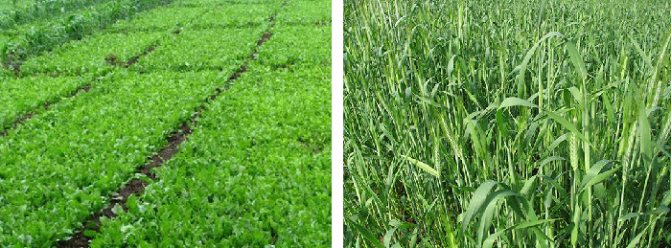

example of sowing green manure plants
How to salt cucumbers for the winter. Two good, tried and tested cucumber canning recipes with and without vinegar. Friends, if you have a pickling recipe for cucumbers that you want to share, we will be very glad to see your recipe in the comments to this post!
They say that Napoleon promised a reward similar in amount to the modern 250 thousand [...]
In solving this issue, too, it is necessary to rely on knowledge of the peculiarities of the development of these cultures and care for them.
- Zucchini and cucumbers are characterized by aggressive growth. Their lashes and roots quickly expand in breadth, capturing large tracts of land. A shadow is created under the bushes, food and moisture are pumped out of the upper layers of the soil.Compact plants such as root vegetables or greens, especially at the beginning of growth, will not withstand this competition. Left without light and power, they will wither away. More powerful plants that extract water and food from the depths, for example, corn and sunflowers, will be able to get along with zucchini and cucumbers.
Corn and cucumber extract food from different soil layers, so they do not compete, on the contrary, corn serves as a support for the cucumber
If the cucumber is grown vertically, you can sow radishes, greens and even early cabbage under its feet, these plants can also be watered often
Wormwood and other odorous grasses have no place in the beds and next to them, find a separate secluded corner for them
In another garden bed next door, you can plant anything except fragrant herbs. But there is a condition for neighbors - they should not shade light-loving cucumbers and zucchini.
From my experience I will add. She planted beans, lupine (siderat), peas next to the zucchini. They grew until the zucchini emerged and grew their burdock leaves. Then, finding themselves in the shade, the stalks of the legumes were bare, the lower leaves turned yellow and fell off, only the tops above the zucchini were green and blooming. I did not see any sense from such a neighborhood.
But under the feet of curly beans, you could sow zucchini. Dill, which we leave on umbrellas, gets along well with everyone. He grows tall, a bare stem is the norm for him, the main thing is that he exposes his baskets to the sun. Last summer I was left without zucchini, because I sowed them next to the wormwood. They bloomed well, but the ovaries did not grow, they crumbled.
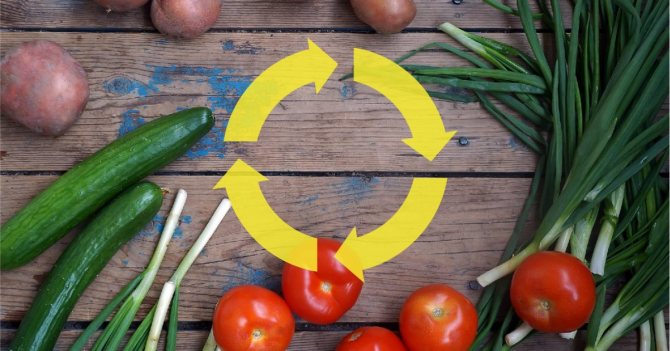

Only 5-6 zucchini were collected from two bushes. And also, when potatoes were planted in the field, they always sowed zucchini at the edge, the yields of both crops were good. There are many tables and lists on the Internet about plant compatibility. In some cucumbers and zucchini are compatible with onions, cabbage, beets, in others they are not. Even gardeners on the forums disagree on this issue.
Mulching cucumbers in the open field photo
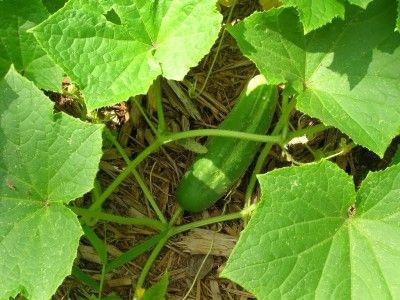

During the flowering period, it is better to stop watering for about a week, but this is possible only if there is a sufficiently high layer of mulch - more than 5 cm. By the evening, the leaves of the cucumbers will hang like a spaniel's ears, but the soil will not dry out, since the mulch will retain moisture, and there will be more ovaries.
In addition to retaining moisture with straw and grass mulch, another interesting way to mitigate the effects of sunlight on cucumbers is to install a trellis with a hut. So the bushes will leave leaves outside and put the fruits in the shade, away from the sun. Mulch and slanting trellis are great techniques to prevent sun bitterness.
During the fruiting period, be sure to feed the cucumbers, otherwise you will lose a significant part of the crop. Herbal tinctures and "garden teas" from cow and chicken manure are essential! You can read about mineral dressings for cucumbers here.
The first year - cucumbers, but what about the second?
The root system of cucumbers is located in the upper soil layers. Constant digging only moves the soil from the lower layers to the upper ones, but the culture again impoverishes it. Over time, the soil is completely depleted.
To prevent this process, other crops with a more powerful root system are planted in place of cucumbers. They are able to partially restore the soil balance.
In open beds
Garlic, celery, onions, tomatoes will delight you with a good harvest. Legumes perfectly increase soil fertility, saturating it and preparing it for corn, tomatoes, peppers, zucchini.
As for the cabbage, it is desirable to allocate a different place for it. After cucumbers, cabbage seedlings will significantly drain the land. It will be extremely difficult to reanimate the beds.
In greenhouses
If open soils have a chance to recover due to the contiguity of crops, then the greenhouse land is completely isolated and its fertility depends only on planting and fertilization.
Having selected almost all nitrogen from the soil, cucumbers saturate it with phenolic compounds. Therefore, after a snack vegetable, you need to plant crops that develop in the ground or with developed roots:
- Peppers;
- Eggplant;
- Parsnip;
- Early potatoes;
- Root parsley;
- Celery.
These vegetables are not afraid of harmful compounds left over from cucumbers.To heal the soil, after harvesting the cucumber tops, white mustard is planted as green manure. When its seedlings rise above the ground, they begin to dig. Further, the beds are covered until spring with black covering material or film.
In open beds
- Potatoes;
- Beet;
- Radish;
- Carrot;
- Turnip.
In greenhouses
Siderates to help
What to do for gardeners who are exclusively engaged in the cultivation of cucumbers for sale? They do not have the opportunity to carry out a change of crops and season after season they only deal with cucumbers. In this case, due attention must be paid to the improvement of the soil.
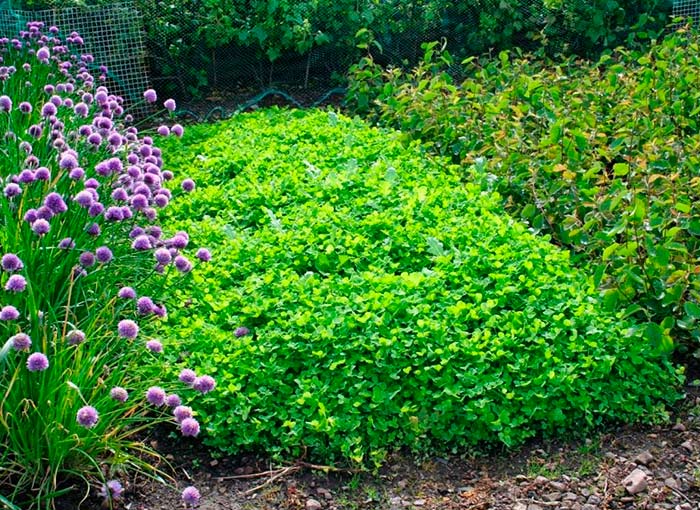

Rules for planting cucumbers after cucumbers:
- After harvesting the cucumbers, seed your plantation or greenhouse with siderates. In other words, green "fertilizers". This is a group of plants that renew the rich soil composition. In the course of their life, they release a large amount of nitrogen into the soil, inhibit the growth of weeds, and reduce the number of pests living in the substrate. Also green manures improve the structure of the earth. Their dead roots create a natural soil aeration system. The best siderates are: cereals, mustard, radish, alfalfa, clover.
- Siderata do not need to be removed from the site. Wait for their natural death with the arrival of cold weather and cultivate the land.
- Be sure to add compost to the ground in the spring. After that, you can plant the cucumbers again.
After what crops should cucumbers be planted
If we take into account all the recommendations and norms of crop rotation, then planting cucumbers in the same place is possible no earlier than in 3-4 years. This takes into account the ability of plants to both absorb food from the soil and enrich it. Since a green vegetable actively consumes nitrogen, its predecessors must have the ability to saturate the earth with this substance.
In the garden, the cucumber should be grown after the legumes, since they are the ones that enrich the beds with nitrogen. After harvesting peas or beans, you should not rush to throw away the stems. They are crushed and dug up together with the soil. Legume stalks that have matured over the winter will be an excellent source of nitrogen for cucumbers.
You can also grow a snack vegetable after onions and garlic. In their beds, they eliminate all harmful microflora, thanks to their bactericidal properties.
Experienced gardeners have noticed that the yield of cucumbers increases after planting them in place after crucifers. These are mainly different varieties of cabbage. But after harvesting early cabbage, you can have time to plant cucumbers. Cruciferous plants loosen the soil very well, which is important for the surface roots of the cucumber.
Nightshades are also good predecessors. They disinfect the soil well. In addition, when growing peppers and tomatoes, the upper layers of the soil rest, which is also beneficial for cucumber.
Having collected the harvest, gardeners begin to plan future plantings in advance. They do all this, taking into account the crop rotation table - an indisputable point of any agricultural technique.
Perfect alternation in a small greenhouse space is quite problematic. Of course, you can put 4 greenhouses and change the place of planting cucumbers every year, but such an expensive option is suitable only for a few.
Also, if you have sufficient funds, you can offer an annual soil replacement. The most optimal option for all segments of the population is only the planting of green manure, or the sequence of growing crops.
An important knowledge for every gardener should be the requirement of cucumbers for crop rotation and agrotechnical rules.
To avoid potential problems associated with crop rotation rules, they should not be ignored. And then the grateful cucumber will give back a lot of crispy and juicy greens.
Theoretically, we all know that one and the same plants should not be planted in one place for several years in a row.If you ask an experienced gardener "Why?", He will most likely answer that plants that are planted for many years in a row on one bed are more sick - after all, over the years, pathogens that are characteristic of [...]
After the radish, everything grows well for me. You shouldn't grow cabbage instead of beets, I always plant potatoes in this place. Greens are neutral with all vegetables. And I remembered that cucumbers and tomatoes do not grow well in the place of onions. I love to change the place of cucumbers with tomatoes. Here, it seems, are my main "migrations" of vegetables from meta to place.
Terranova
Cucumbers are among the most popular vegetable crops. It is impossible to find a home plot where this crop is grown. But the harvest is different for everyone. This is influenced by many factors. And one of the main ones is compliance with the rules of crop rotation. How to properly plan the sequence of planting vegetables before and after cucumbers? What to plant next year?
Every experienced summer resident-gardener knows that different crops take different nutrients from the soil and in different quantities. If you plant cucumbers in one place for at least two years in a row, this will lead to depletion of the soil. The soil will lose its fertile properties specifically for cucumbers. But if a new crop is planted next year, then these vegetables will feel great.
It is important to know that some vegetables are not able to take root in the neighborhood. It is also important to rotate crops that have different soil requirements.
Attention! An important rule of crop rotation: do not plant one crop in the same bed for several seasons in a row. Therefore, you cannot plant cucumbers after cucumbers.
Plants that have similar soil requirements to cucumbers, a similar type of root system, and even similar types of diseases are not suitable as predecessors. All plants from the pumpkin family are at risk. They are very active in depleting the soil. To prevent cucumbers from picking up from pumpkin joint pests, you have to lime the soil. And this procedure over the years leads to the accumulation of alkali in the ground. As a result, not cucumbers, but weeds will actively grow on the site.
- Pumpkin.
- Melon.
- Zucchini.
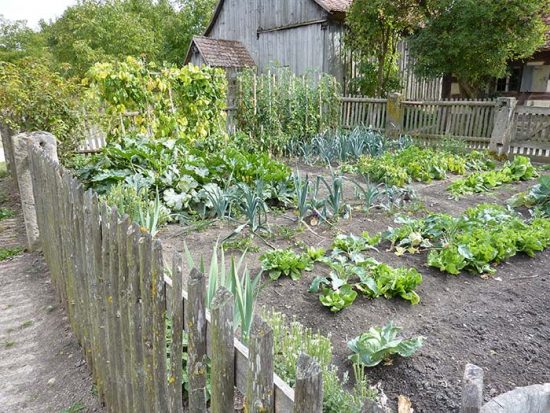

- Eggplant.
- Zucchini.
- Loofah.
- Patissons.
Almost every gardener has heard of such a term as crop rotation. It is necessary to give the soil a break from the same fertilizers. Indeed, when planting the same crop in one place for several years, the soil gives off the same nutrients. Accordingly, if you plant another crop in this place next year, the soil will restore the spent nutrients of last year's production.
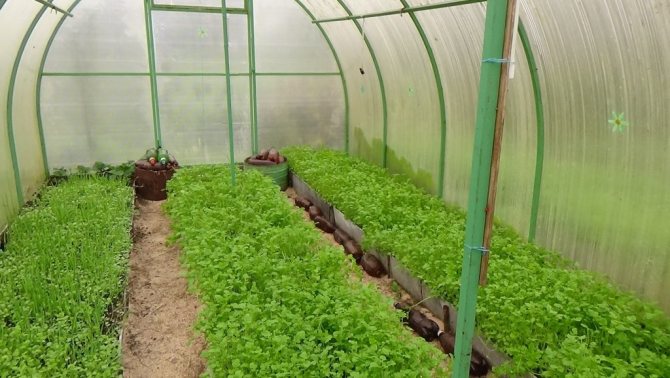

Crop rotation
Siderata improve the organic composition of the soil, prevent weeds from growing on the soil. Loosens the soil at a shallow depth. They are applied on the soil exclusively with regard to crop rotation. If you plant them just like that, it can harm the soil.
Siderata need careful study, some of them are also not planted after other crops. For example, green manure such as mustard should not grow in an area where radish or cabbage of any kind grew last year. Siderates include the following crops:
- mustard,
- rape,
- lupine,
- oats,
- rye, etc.
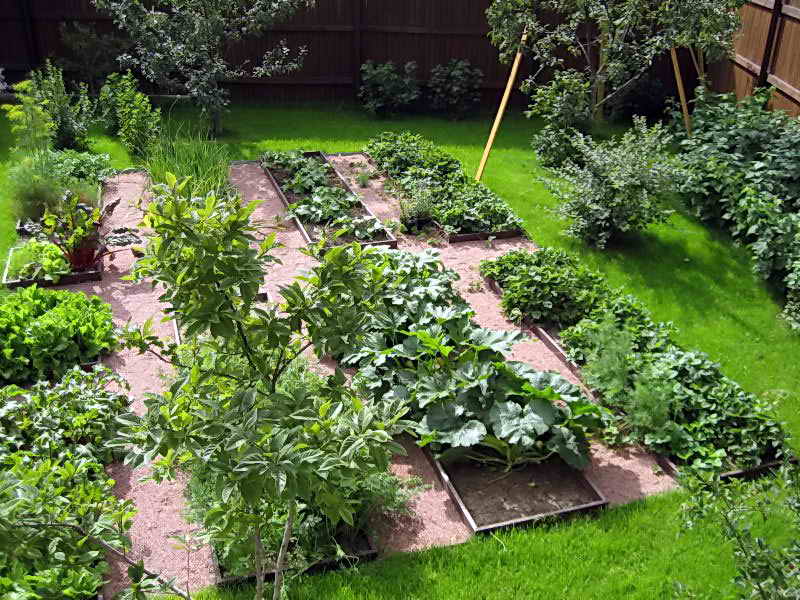

Crop rotation
Some vegetables can also be considered green manures: peas, beans, cabbage, radish, watercress, etc. They are not compatible with each other in terms of crop rotation. That is, if you sow cabbage after rapeseed, it will not bring any benefit to the soil. The soil will continue to release nutrients from the same group. Green manures for fertilizing the soil with nutrients can be compared to compost or manure.
Crop rotation is the alternation of crops in one area. And not a simple alternation, but competent, taking into account the requirements of plants. Crop rotation helps to significantly increase the return on the use of the site without significant investment.
So, in the same place it is not recommended to grow the same crop for several years in a row. First, in this case, there is a high probability of depleting the soil - after all, year after year, plants will take from it the same nutrients suitable for them. As a result, the yield of the monoculture itself will decrease on poor soil.
And on top of that, you will "help" the pathogens of certain diseases to accumulate on the site. In addition, the roots of many plants secrete toxins to which representatives of their families are most sensitive - i.e. if you plant these vegetables in the same place for several years in a row, each subsequent harvest will be worse than the previous one.
The correct crop rotation neutralizes all these negative effects, making the soil healthier and allowing its resources to be spent more rationally.
But it is not worth thoughtlessly planting whatever is in the garden on the principle “if only there was a different culture”. For example, if you alternate on the site of "relatives" (representatives of the same family), with a high degree of probability you will get the situation that we have already described - after all, related plants feed on the same substances, suffer from the same diseases and are attacked by the same pests ...
Plant as many different cultures as possible one after another? Also not an option - they may have completely different requirements for the composition of the soil, microclimate, illumination of the site. In addition, all plants have different requirements for the amount of nutrients they need. For example, it would be a bad idea to alternate pumpkin with cabbage or potatoes in the garden - all of them are active consumers of micronutrients.
The correct crop rotation looks like this: in the first year, the most "gluttonous" crop is grown on the garden bed, in the following - plants with a lower need for nutrients, in the fourth or fifth year, fertilizers are applied and the crop from the first group is planted again.
In addition, remember that any beds need periodic "rest", so from time to time they need to be left unseeded (under steam).
- Crop rotation, or What to plant afterwards in the garden
Useful information for those who want to harvest a good harvest of vegetables and herbs every year.
Crop rotation is considered an element of soil and plant maintenance. This is a scientifically based method that involves the rotation of crops on the site, which allows you to influence the quality characteristics of the soil, as well as the yield.
The essence of the method lies in the fact that certain plants need elements that accumulate in the soil. What are the advantages and principles of crop rotation:
- Helps maintain the correct nutrient balance in the soil.
- Helps to avoid deficiency of certain elements.
- Reduces the risk of erosive changes.
- The formation of plants in groups will greatly facilitate procedures aimed at crop care.
- Reduces the risk of developing diseases of a fungal and other nature, and also minimizes the likelihood of plant damage by pests.
If the gardener alternates crops on the site, then this allows him to:
- to save the soil from depletion, less often to make top dressing;
- increase the yield rate;
- improve the quality characteristics of the soil, without the use of additional efforts.
Since cucumbers are very demanding on the soil, they do not always receive the necessary "nutrition". The culture needs nitrogen, phosphorus, carbon dioxide. If you plant them in the same place, then the yield indicator will drop. And the poor soil will have to be "reanimated" for several years by applying various fertilizers.
Since cucumbers have increased soil requirements, it is not always possible to plant them after certain crops. Some plants need the same elements as our cucumbers.If during the growth process they do not receive the necessary elements, this will significantly affect the yield indicator.
| Excellent precursors to cucumber | Corn, tomatoes, potatoes, peas, onions, cabbage, beans, beans |
| Good predecessors | Greens, beets |
| Invalid | Pumpkin, zucchini, squash, cucumbers, melons, watermelons |
| What to plant after cucumbers | Greens, beets, legumes, garlic, eggplant, potatoes, onions, peppers, tomatoes |
Crop rotation table of vegetables on the site
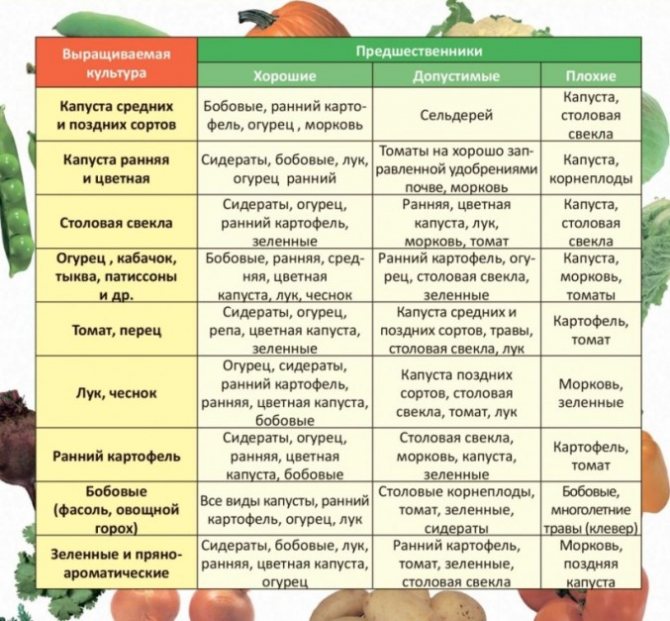

Having collected the harvest, gardeners begin to plan future plantings in advance. They do all this, taking into account the crop rotation table - an indisputable point of any agricultural technique.
Perfect alternation in a small greenhouse space is quite problematic. Of course, you can put 4 greenhouses and change the place of planting cucumbers every year, but such an expensive option is suitable only for a few.
Also, if you have sufficient funds, you can offer an annual soil replacement. The most optimal option for all segments of the population is only the planting of green manure, or the sequence of growing crops.
| Excellent precursors to cucumber | Corn, tomatoes, potatoes, peas, onions, cabbage, beans, beans |
| Good predecessors | Greens, beets |
| Invalid | Pumpkin, zucchini, squash, cucumbers, melons, watermelons |
| What to plant after cucumbers | Greens, beets, legumes, garlic, eggplant, potatoes, onions, peppers, tomatoes |
Crop rotation rules: after which to plant cucumbers, and what crops after them
Crop rotation
Soil crop rotation is a systematic alternation of annual crops. This technique allows you to avoid depletion of the soil and from year to year to get a rich harvest on the same beds, without leaving them empty for rest. The alternation must be carefully planned so that the preceding plants will help grow a rich crop for those crops that will be planted next year. This type of farming is part of organic farming, natural, close to the natural option.
Sweet cherry Bull heart description of the variety photo reviews
Planting winter rye as a siderat in the fall
What can be planted on a windowsill in winter from greenery
How to feed an orchid with succinic acid tablets
If the same type of crops is planted every year, there is a shortage of the element that was most in demand. Planned rotation of plant groups helps to avoid this. Thanks to the alternation, it is possible to maintain the balance of nutrients: the properties of the soil are used systematically, the deficiency of elements is replenished by subsequent crops.
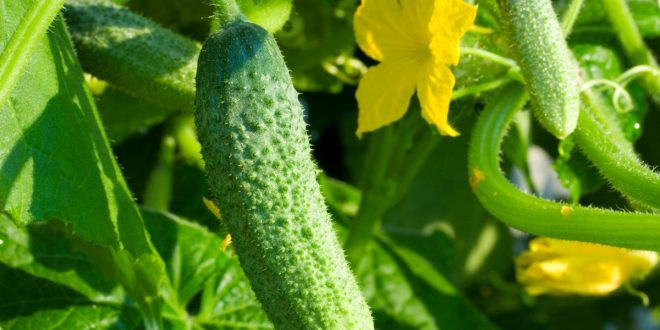

In addition, botanically related plants growing nearby can be affected by the same pests or diseases. Insect larvae, causative agents of diseases accumulate in the soil and in the new season are able to destroy the entire plantation of crops in a short time. Timely relocation of plants to a new location deprives pests of the opportunity to damage future plantings.
There is an additional plus of crop rotation and the accompanying grouping of garden crops in accordance with their needs - this principle of planting facilitates the work of the gardener, since the same conditions for watering, mulching, lighting are created within the same planting plot.
Garlic
It is able to relatively quickly restore the characteristics of the soil. Garlic can be planted after the end of the cucumber season. When the fruits are harvested, and this happens in August-September, then you can dig up the garden bed and use it to plant garlic.
Carrot
Another good option - on average, it takes 1.5 months for carrots to ripen. If you prepare the seedlings in advance, plant them in the ground after the cucumbers, then, under favorable climatic conditions, it will be possible to harvest this crop as well.
Attention! Perhaps the most expensive, but an alternative option is to have several greenhouses on the site and plant cucumbers in them in turn. Soil change is also an alternative.
Soil restoration, like planting planning, is a science of its own. It is difficult to learn all the subtleties and nuances of plant care. But do not neglect the alternation, as this can significantly increase the yield and improve the quality of the soil.
The healing properties of cucumber
- Improves the functioning of the thyroid gland, thanks to the iodine content (0.003 mg).
- It normalizes metabolism, slows down the aging process, prevents the formation of stones in the internal organs, due to the content in it of a large amount of alkaline salts.
- It has a diuretic, choleretic effect. Used as a mild laxative (if not mixed with milk).
- Removes excess cholesterol. It is a prophylactic agent against atherosclerosis.
- Normalizes blood pressure due to its high potassium content (147 mg).
- Pickled cucumbers are antibacterial.
- Helps with burns, bruises. To do this, you need to attach a circle of fresh cucumber to the affected area of the skin.
- Cucumber juice can help cure coughs.
Is it possible to plant cucumbers before and after tomatoes
Despite the affirmative answer of experts regarding this issue, summer residents continue to challenge it again and again. Tomatoes are often planted before and after cucumbers. These two crops are often interchangeable among gardeners, especially in greenhouses.
Since the belonging of these vegetables is different, they do not have common diseases either. Pumpkin crops are very fond of fresh organic matter, but while it is overcooked, the cucumbers will have time to leave their beds. During the winter, fertilizer will enrich the soil, making it nutritious for tomatoes.
After tomatoes, cucumbers can be grown in complete peace. They will not fall ill with late blight, and as for the quality of the soil, it can be enriched with humus or compost.
Despite the affirmative answer of experts regarding this issue, summer residents continue to challenge it again and again. Tomatoes are often planted before and after cucumbers. These two crops are often interchangeable among gardeners, especially in greenhouses.
Companion plants for cucumbers
A good neighbor is needed not only for humans, but also for plants. This point is also important because it helps to plan the planting for one season.
Recommendations for what to plant next to cucumbers:
- Legumes, especially various types of beans. When harvesting legumes, it is better to cut them off, leaving the roots in the soil - more nitrogen will remain in the soil.
- Corn will be an excellent neighbor, it protects from the wind.
- Garlic can help cope with diseases such as bacteriosis.
- Dill increases yields.
- Spinach and lettuce release substances that aid root development in cucumbers and protect against overheating.
- From greens, you can also plant onions and fennel next to it.
The question of planting tomatoes and cucumbers next to it or not, still remains open. And each gardener responds to it independently, based on his own experience. At the same time, there are directly opposite opinions - some recommend such a combination, while others are categorically against such a neighborhood.
From a scientific point of view, the roots and leaves of these plants do not emit substances hazardous to each other, so their proximity is permissible. The only difference will be in irrigation technology.
Useful table: which plants can be planted nearby and which should not
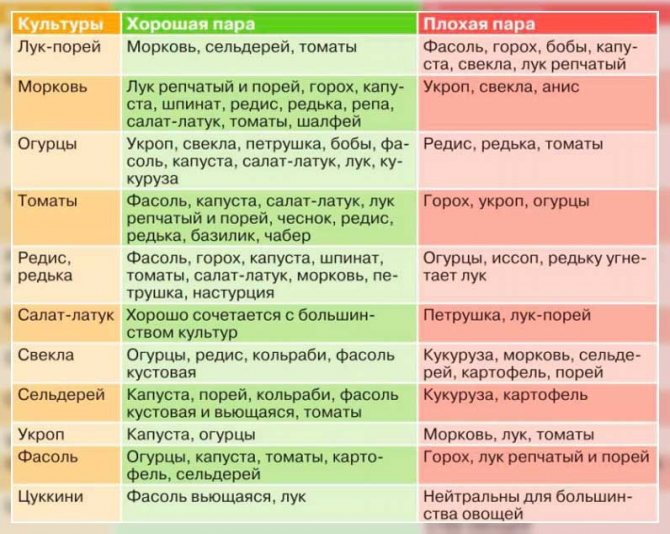

Good and bad combinations of vegetables
Cucumbers as bad predecessors
Since planting plants of the same type negatively affects the soil, then, as for the cucumber, it does not plant after its relatives:
- Melons;
- Zucchini;
- Zucchini;
- Watermelons;
- Patissons;
- Pumpkins.
In addition to common addictions to trace elements, this family also has common diseases and pests.Once in the soil, bacteria for the next year receive the same cultures at their disposal and begin to actively multiply. The same applies to the pest.
For their family, cucumbers are not only followers, but also predecessors.
Colins, secreted by the roots of cucurbitaceae, are a danger to the entire family.
It is not pretentious to the soil, it restores soil indicators well, helps to achieve the desired result. Peas will return the necessary characteristics to the land, but it will have to be cultivated for at least 2 years.
Beans
Also tolerates the "neighborhood" with cucumbers well. If you decide to plant it after cultivating cucumbers, you can't go wrong.
As for legumes, they perfectly restore the soil. Allow the soil to "rest". Therefore, gardeners often plant them on the site after cultivating cucumbers and other "demanding" plants.
Potatoes
If possible, plant in the place where the cucumbers previously grew - root vegetables. Potatoes will help the soil to normalize nitrogen, phosphorus and carbon dioxide levels. The potatoes are dug up, but the tops can be left on the site, dug up.
Since the onion belongs to root crops, it is perfect for restoring soil indicators.
Zucchini
They are classified as the closest relatives of cucumbers, for this reason, zucchini is not cultivated in those parts of the site where this culture previously grew.
Cabbage
Planting a vegetable is not recommended, as cabbage will further deplete the soil. The soil will have to be restored for a long time.
Radish
Radish does not have high requirements, it is often planted after cucumbers, which allows you to restore and normalize the characteristics of the soil.
Peppers can be nominally planted after cucumbers. But it is better not to do this for several reasons: peppers are demanding on the soil, require careful maintenance and significantly deplete the soil. It is better to postpone planting peppers and postpone it "until better times."
What to do if there is no choice: siderates
To increase the yield of cucumbers with constant planting in one place, siderates are increasingly used (plants that are grown so that after them you can "renew" the soil). They are of several types:
- Cruciferous - pest defenders, weed controllers, soil orderlies (white mustard, rape, rapeseed, oil radish).
- Cereals - destruction of weeds (oats, wheat, rye, Sudanese herbs, fescue).
- Legumes - nitrogen suppliers (peas, clover, chickpeas, soybeans, lentils, beans, vetch, lupine, sweet clover).
In greenhouses, where crop rotation is practically not carried out, phacelia, white mustard, rape, alfalfa, vetch are increasingly planted.
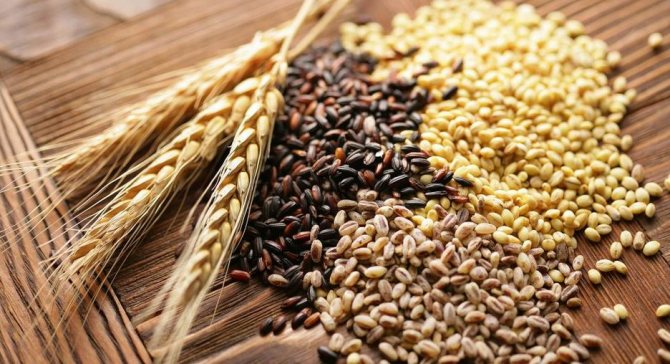

Sowing works are carried out both in early spring and in autumn, after harvest.
With the use of green manure, important tasks are solved:
- saturation of the soil with nitrogen and carbon dioxide;
- slowing down the growth of weeds;
- fight against wireworm, nematode, moth;
- increased soil permeability.
30 days after sowing (in order to avoid germination), green manure is mowed and embedded in the soil, or used as a mulching material. Both are useful for the active growth of cucumber seedlings.
Who to identify as neighbors for cucumbers
If we take into account all the possibilities and characteristics of plants, then they can be grown in pairs. Good neighbors will help you cope with pests and diseases. They will not compete for the sun and trace elements.
Of the spices, only dill will withstand a cucumber neighbor. But between salads and potatoes, it is advisable to plant peas, beets, radishes.
Tomatoes grow well before and after zelentz, but they don't get along well together. And there are good reasons for this:
- They need different microclimatic conditions;
- Watering is strictly individual;
- Overgrown tomato bushes will oppress the green vegetable.
Cucumber gets along well with corn, as it protects it from the winds and serves as a support. As a natural antiseptic, garlic helps to cope with diseases. Spinach salad protects cucumbers from overheating, and dill helps to increase yields.
Eggplant and pepper are suitable as a companion to the greens. They are grown in beds and greenhouses. It is only required to direct the lashes of cucumbers so that they do not drown out their neighbors. The strong stems of the sunflower perfectly support the cucumbers, acting as supports.
Crops that are successfully located in the neighborhood will help each other in growth, produce the substances necessary for neighbors, and jointly scare off pests. Therefore, it is important to select vegetables in the garden so that they do not compete for a "place in the sun", but interact successfully. It is not recommended to plant cucumbers near potatoes, salads and herbs. The exception is dill.
Neighborhood with tomatoes is controversial, although some grow them in the same greenhouse.
- First, these vegetables have different microclimate requirements.
- Secondly, in the process of growth, tomatoes will oppress cucumber plants.
- They also have a difference in watering.
Radishes, beets, corn, peas get along well next to cucumbers. These crops, due to their agricultural technology, do not compete with cucumbers for nutrients.
Eggplants are good neighbors for cucumbers. They can be grown side by side both outdoors and in a greenhouse. Growing cucumbers and peppers at the same time is also quite acceptable. It is only necessary to observe the conditions under which the cucumber lashes will not shade the pepper, therefore, the direction of growth of the lashes is taken into account. Neighborhood with zucchini can also be called good. Just make sure that their leaves do not drown out the cucumber specimens.
What kind of soil and growing conditions do cucumbers need?
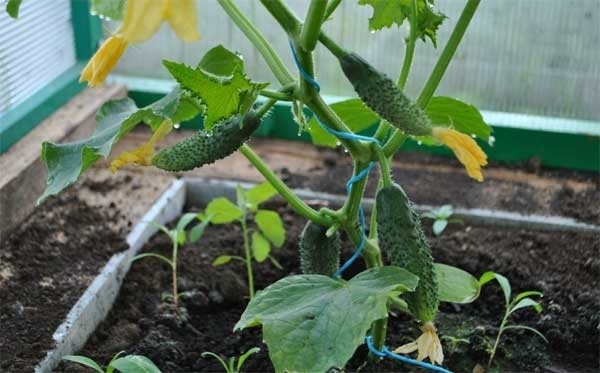

Cucumbers love fertile soil. This should not be forgotten when growing them both in the open field and in the greenhouse. It is best if the composition of the soil is loamy or sandy loam. Heavy and acidic soils are not suitable for cucumbers. The acid reaction should be neutral or slightly alkaline. The optimal indicator is a pH of 7.
The acidity of the soil can be determined using litmus paper, or by observing the growth of weeds. If horsetail, plantain, horse sorrel, heather grows on the site, it means that the acidity is high and it must be reduced artificially.
You do not need to do anything if weeds such as wheatgrass, clover, common chamomile, coltsfoot, field bindweed are found. These plants are an indicator of weak soil acidity. Such land is quite suitable for growing cucumbers. They are engaged in the preparation of the beds in the fall.
Sour soil is limestone with ash, lime, dolomite flour. For low-acid soil, alkaline liquid fertilizers are used. In the spring, the surface of the soil is dug deeply, after which humus is added. Then the bed is watered abundantly and covered with foil for 2-3 days. It doesn't matter if you are going to sow seeds or plant seedlings - the garden bed is prepared after the threat of frost has disappeared.
Helpful advice! It is recommended to grow cucumbers in elevated beds. In this case, the yield will be much larger.
Cucumbers can be planted 7 days after the preparation.
Crop rotation rules: what is it
There are almost no crops that could be grown in the same garden every year. We, of course, know about potato fields that rarely change their location, but potatoes are almost the only vegetable that can be planted in one place for 2-3 years in a row. For a couple of years, you can not change the tomato bed, the same applies to beans or peas. But then these cultures should still be transferred to a new place for several years. This is due to commonplace reasons.
One reason is that different vegetables have different diets. Some consume more nitrogen, others - potassium, etc. Yes, there are simply "gluttons" and such crops that are content with little. Therefore, when you plant something in one place every year, the reserves of specific nutrients are quickly depleted, and it is very difficult to establish a balance by simply applying fertilizers. It is necessary that vegetables with different food preferences grow in the garden for several years.
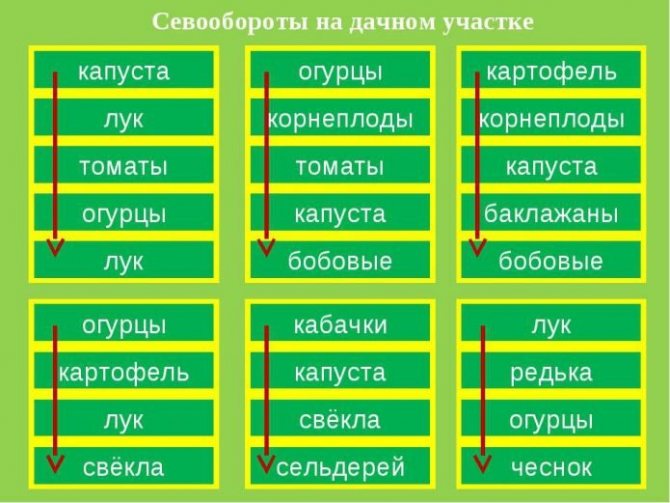

Various reference tables take into account, first of all, the food habits of gardeners
The second reason is the accumulation of pathogens and pests, which can be very different for different crops. The third reason is similar to it: each vegetable leaves behind on the garden products of processed nutrients that can be toxic, and in a few years their concentration can exceed reasonable limits.
From the point of view of nutrition, the correct alternation of crops should look like this: first, some of the most "gluttonous" vegetables are planted on a well-rested and fertilized garden bed, then for 2-3 years others, with less need for nutrition, then they give the soil a rest by holding it under steam, apply large doses of fertilizer and start all over again.
Considering all the reasons for the need for crop rotation, its main provisions can be formulated in just three phrases:
- cultures with deeply penetrating roots should be alternated with those in which the root system is in the surface layer;
- vegetables that have a similar set of diseases and are affected by the same pests should not be planted one after another;
- the subsequent culture must have different nutritional "preferences".
Based on these provisions, after cucumbers, it is permissible to grow many different vegetables, the list of prohibited ones is small.

